Emerging Biological Threats and Pandemic Preparedness Workshop – Key Takeaways and Event Highlights
Food from Thought’s Emerging Biological Threats and Pandemic Preparedness in Our Agri-Food System Research Integration Workshop took place on Thursday, June 13th, 2024, in Guelph, ON. This research integration workshop brought together leading researchers, industry experts, and policymakers to discuss practical solutions to fortify our defences against emerging pathogens. The COVID-19 pandemic has exposed fundamental […]

